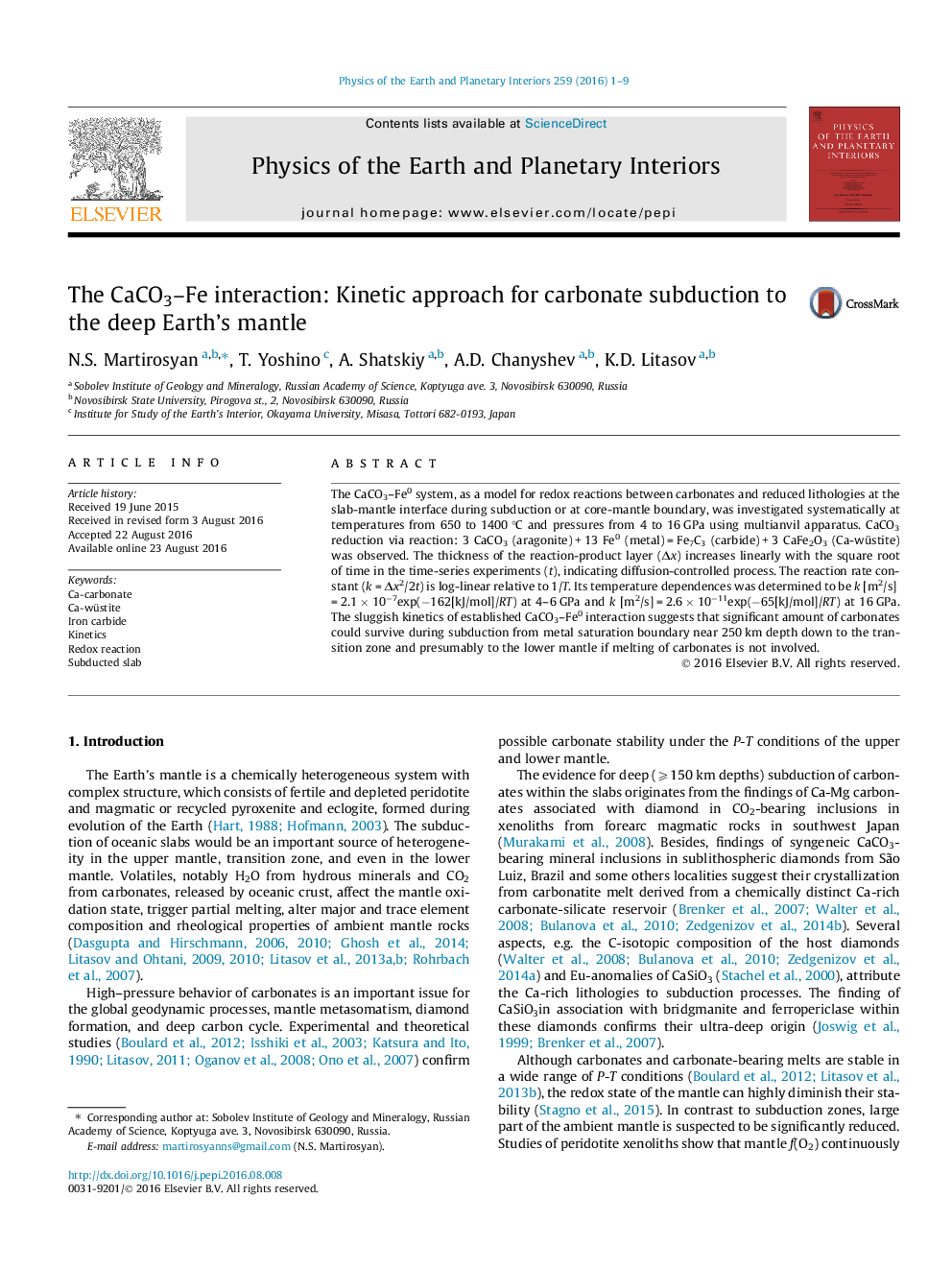| Article ID | Journal | Published Year | Pages | File Type |
|---|---|---|---|---|
| 4741338 | Physics of the Earth and Planetary Interiors | 2016 | 9 Pages |
•CaCO3–Fe0 interaction was investigated in multianvil experiments at 4–16 GPa and 650–1400 °C.•Ca-carbonate reduction by metallic iron is defined as: 3CaCO3 + 13Fe0 = Fe7C3 + 3CaFe2O3 (wüstite).•Reaction is suggested to be diffusion-controlled and rate constants, k [m2/s], were determined.•k = 2.1 × 10−7exp(−162[kJ/mol]/RT) at 4–6 GPa and k = 2.6 × 10−11exp(−65[kJ/mol]/RT) at 16 GPa.•Up to 80% carbonates is estimated to be transported down to mantle transition zone without reduction.
The CaCO3–Fe0 system, as a model for redox reactions between carbonates and reduced lithologies at the slab-mantle interface during subduction or at core-mantle boundary, was investigated systematically at temperatures from 650 to 1400 °C and pressures from 4 to 16 GPa using multianvil apparatus. CaCO3 reduction via reaction: 3 CaCO3 (aragonite) + 13 Fe0 (metal) = Fe7C3 (carbide) + 3 CaFe2O3 (Ca-wüstite) was observed. The thickness of the reaction-product layer (Δx) increases linearly with the square root of time in the time-series experiments (t), indicating diffusion-controlled process. The reaction rate constant (k = Δx2/2t) is log-linear relative to 1/T. Its temperature dependences was determined to be k [m2/s] = 2.1 × 10−7exp(−162[kJ/mol]/RT) at 4–6 GPa and k [m2/s] = 2.6 × 10−11exp(−65[kJ/mol]/RT) at 16 GPa. The sluggish kinetics of established CaCO3–Fe0 interaction suggests that significant amount of carbonates could survive during subduction from metal saturation boundary near 250 km depth down to the transition zone and presumably to the lower mantle if melting of carbonates is not involved.
